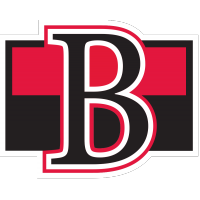
Learning the AHL: Player Contracts
June 28, 2018 - American Hockey League (AHL)
Belleville Senators News Release
After taking a look last week at the ways a player can be acquired, and how they might end up in Belleville, the second instalment of our 'Learning the AHL' series will take a look at the differing types of contracts a player can sign.
Two-way NHL contract
NHL teams may sign players to "two-way contracts", meaning that the signed player will earn a certain salary of they play for the NHL team, and a lower salary playing in the minors. NHL contracted players make a pro-rated salary based on a 180-day season, so as an example, every day that a two-way contracted player spends on the Ottawa Senators' roster, they will earn their NHL salary, and for every day they spend on the Belleville Senators' roster they will earn their minor league salary. Additionally, all entry-level contracts (refer to week 1) are two-way contracts that have a maximum minors salary (currently $70,000). Examples of players currently signed to two-way contracts for the Senators are Erik Burgdoerfer ($650,000 in NHL / $150,000 in AHL) and Ben Sexton ($725,000 in NHL / $165,000 in AHL).
Standard AHL Player's Contract
NHL teams can only have up to 50 players under contract at one time, which typically does not allow them to fill a full NHL and AHL roster. Because of this, NHL teams can sign players to contracts solely to play for their AHL affiliate, meaning that these players cannot be recalled to the NHL despite playing within the organization. A few examples of players signed to AHL contracts are Ryan Scarfo, Boston Leier and Jordan Murray.
Professional try out agreement
One difference between the NHL and AHL is that while NHL players have to be under a full contract to play regular season or playoff games, AHL players do not. If an AHL team wants to give a player with previous professional experience a chance to prove they are deserving to stay with the team, they can sign them to a Professional Try Out Agreement (PTO) to allow them to play up to 25 regular season games before the team decides to either release them or offer them a full contract. PTO's are also commonly used to temporarily fill an AHL team's roster in times of injury or if their NHL affiliate has recalled a lot of their players.
Most of these players will come from teams in the ECHL, as they are eligible to be given PTO's as long as they are given permission by their team's Head Coach. While most of the PTO's signed to Belleville are from their ECHL affiliate, the Brampton Beast, the Senators are allowed to sign a player from any ECHL team. The Belleville Senators signed nine players to PTO's in their inaugural season- two of whom (Ethan Werek and Jim O'Brien) were signed to full AHL contracts.
Amateur try out agreement
Much like PTO's, amateur try out agreements (ATO) are used to temporarily evaluate players in a short term before deciding whether to sign them or not. The difference between PTO's and ATO's is professional experience- ATO's are used for "amateur" players, meaning that the player has yet to play a professional game. This works best for amateur free agents (see last week) that the team is interested in, or draft pick prospects whose amateur seasons' have ended. The Belleville Senators signed three players to ATO's in their inaugural season- two of whom were signed to AHL contracts (Ryan Scarfo and Boston Leier) and one who was signed to an NHL entry-level contract (Andrew Sturtz).
Next week, we'll take a look at the specific details that go into an American Hockey League roster.
• Discuss this story on the American Hockey League message board...
American Hockey League Stories from June 28, 2018
- Stars Re-Sign Colin Markison for 2018-19 Season - Texas Stars
- Hogs Agree to Terms with Rockford Youth Hockey Alum Josh McArdle - Rockford IceHogs
- Syracuse Crunch Announce New Hires - Syracuse Crunch
- Learning the AHL: Player Contracts - Belleville Senators
- Lexus Named Title Corporate Partner for 2019 AHL All-Star Classic - AHL
- American Hockey League, Springfield Thunderbirds Announce Lexus as Title Corporate Partner for 2019 AHL All-Star Classic - Springfield Thunderbirds
The opinions expressed in this release are those of the organization issuing it, and do not necessarily reflect the thoughts or opinions of OurSports Central or its staff.
Other Recent Belleville Senators Stories
- Belleville Sens Season Ends against Rival Rocket
- Belleville Sens Launch 2024-25 Year in Review and #MySensMoment Campaign
- Belleville Sens Announce 2024-25 Player Award Winners
- Comeback Falls Just Short in Sens Season Finale
- Sens' Playoff Push Ends in 5-1 Loss in Laval

